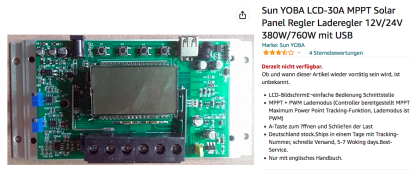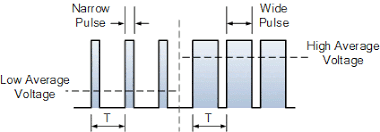Warpspeed
Solar Wizard
Wikipedia, pulse width modulation:
https://en.wikipedia.org/wiki/Pulse-width_modulation
The middle of the first paragraph mentions how MPPT can be used in conjunction with PWM, click on the link for an explanation of MPPT.
An MPPT controller still always uses pulse width modulation to adjust the solar panel loading and battery voltage. Its the exact same thing, but with a software program to find and lock onto the most efficient point for bulk battery charging.
https://en.wikipedia.org/wiki/Pulse-width_modulation
The middle of the first paragraph mentions how MPPT can be used in conjunction with PWM, click on the link for an explanation of MPPT.
An MPPT controller still always uses pulse width modulation to adjust the solar panel loading and battery voltage. Its the exact same thing, but with a software program to find and lock onto the most efficient point for bulk battery charging.
Last edited:





